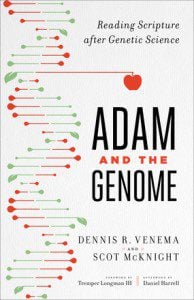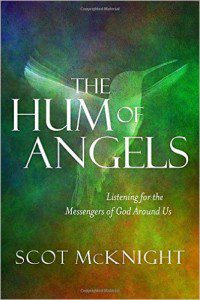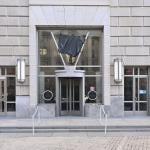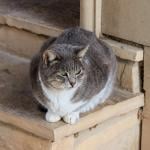Adopting mom deals with the serious question: ““Why did their Mommy and Daddy not want them?”… …was the question that was dropped into my lap as I was sitting on the floor, with an elementary-aged girl, in our Children’s Worship Room this past Sunday. This young girl had just recently immigrated to the US from China with her family….just shy of a few weeks ago. She had asked this question upon finding out that both Toby and Stella were adopted. To be absolutely clear, her question came from an innocent and sincere heart. This is one of the tougher moments for me in adoption. And yet, it is our reality as we raise these kids. As much as I’ve equipped myself to answer this with love, gentleness and confidence – it is still a question that is difficult to hear and take in. It’s loaded with so much brokenness, that often, it’s incredibly hard for my heart to handle.”
Our President (at Northern) is now posting a devotional week. Check out this one, and I’m thinking Mark Galli might get a chuckle out of this.
Pete Enns: “Glory and humiliation. Not a formula for getting saved from hell, but a pattern of life modeled by Jesus and destined for his followers. If it was good enough for Jesus, Paul says, it’s good enough for us. Experiencing in our daily journey the same power that raised Jesus–but, only if we are also willing to accept the other side of the coin, deep suffering. This is why suffering is a normal state of affairs for followers of Christ. If you feel like you can’t go on, you’re on the right track. Dying and rising. A sobering paradox.”
Shifts in the future of education, including especially seminary education — by Northern Seminary’s Greg Henson.
O my, that’s what you call a big ol’ bird nest.
Meanderings in the News
Gregg Frazer takes on David Barton about Jefferson’s theology and faith. “David Barton’s fundamental claim in chapter 7 of The Jefferson Lies is that Jefferson was orthodox for the first 70 years of his life and only rejected the fundamental doctrines of Christianity in the final 15 years of his life. In support of this claim, Barton said that in his 1776 Notes on Religion, Jefferson “affirmed that Jesus was the Savior, the Scriptures were inspired, and that the Apostles’ Creed ‘contain[ed] all things necessary to salvation’” (p. 168). That is simply not true.”
 I like this picture of a gosling, reminding of the need to have good solid footings.
I like this picture of a gosling, reminding of the need to have good solid footings.
Jordan Weissmann and employment for PhDs: “Politicians and businessmen are fond of talking about America’s scientist shortage — the dearth of engineering and lab talent that will inevitably leave us sputtering in the global economy. But perhaps it’s time they start talking about our scientist surplus instead. I am by no means the first person to make this point. But I was compelled to try and illustrate it after readinga report from Inside Higher Education on this weekend’s gloomy gathering of the American Association for the Advancement of Science. In short, job prospects for young science Ph.D.’s haven’t been looking so hot these last few years, not only in the life sciences, which have been weak for some time, but also in fields like engineering.”
Blaire Briody: “As the higher education system in the U.S. faces rising costs and reduced state funding, many are asking, What will colleges of the future look like? According to a recent cover story in The American Interest, some won’t look like anything at all, because they’ll cease to exist. Author Nathan Harden estimates that in 50 years, half of the approximately 4,500 colleges and universities in the U.S. will go belly-up.”
Adam Kirsch’s good piece about the new essayists.
Cocooning is rising: “McLEAN, Va. — Cocooning is undergoing a metamorphosis: Call it super-cocooning. Thanks to always-on wireless Internet connectivity and bigger, better TVs that reproduce pixel-perfect high-definition video, cocooning is entering a new evolutionary stage. Consumers are staying home more, watching movies delivered via cable, satellite, Internet or disc, eating in and transforming their apartments and houses into a shelter from the daily social storm. This new level of super-cocooning is affecting Hollywood, professional sports and restaurants across the U.S. “Everybody is nervous, really nervous,” says trend forecaster Faith Popcorn, who coined the term “cocooning” in 1981. “I think we are looking for protection. Almost like the Jetsons, we want to walk around in a little bubble. We are moving toward that.” Cocooning is not a new behavior. Born out of a mix of fear and fun, it became a trend identified with Cold War unease that led to stay-at-home entertainment such as the first home video game systems, rec rooms and the adoption of home swimming pools and trampolines.”
Fun article on words: “7. ALLIGATOR Alligator came to English from the Spanish explorers who first encountered “el lagarto” (lizard) in the New World. While the big lizards were for a time referred to as “lagartos,” the “el” accompanied often enough that it became an inseparable part of the English word.”
Happiest cities in the USA. “Is Disneyland really the happiest place on Earth?* How happy is the city you live in? We have already seen how the hedonometer can be used to find the happiest street corner in New York City, now it’s time to let it loose on the entire United States. We plotted over 10 million geotagged tweets from 2011 (all our results are in this paper), coloring each point by the average happiness of nearby words (detail on how we calculate happiness can be found in this article published in PLoS ONE)…”
 Good news about curing blindness: “Researchers at the Institute for Ophthalmic Research at the University of Tübingen have restored vision in blind patients using tiny retinal implants embedded in the eye. Nine patients were chosen because they had all suffered hereditary diseases where the retina had degenerated to the point of blindness, but left the remainder of the visual pathway intact. Eight of the nine could still detect some light, although could not locate its source. One was completely blind. Each was implanted with a tiny 3x3mm film square containing 1,500 photodiodes which send out electrical signals when they detect light. The electrical signals are picked up by the nerve cells lying against the retina and passed to the brain. When the retina implant is switched on, the patients perceive a pixellated diamond in the centre of vision, 15 degrees wide.”
Good news about curing blindness: “Researchers at the Institute for Ophthalmic Research at the University of Tübingen have restored vision in blind patients using tiny retinal implants embedded in the eye. Nine patients were chosen because they had all suffered hereditary diseases where the retina had degenerated to the point of blindness, but left the remainder of the visual pathway intact. Eight of the nine could still detect some light, although could not locate its source. One was completely blind. Each was implanted with a tiny 3x3mm film square containing 1,500 photodiodes which send out electrical signals when they detect light. The electrical signals are picked up by the nerve cells lying against the retina and passed to the brain. When the retina implant is switched on, the patients perceive a pixellated diamond in the centre of vision, 15 degrees wide.”
Some more good news about coffee from Jean Tang: “Anything this good must be bad. That’s the prevailing attitude when it comes to caffeine, isn’t it? We crave it. We guzzle it. Drinking coffeemakes us feel good — better able to handle an overbearing boss or an unruly pack of toddlers. But then… we feel guilty about it, suspecting that sooner or later, it’s going to do us in. In reality, it’s not the guilty pleasure everyone makes it out to be — in fact, caffeine side effects can do you good. So feel free to grab a tall breakfast blend while we set the record straight.”












